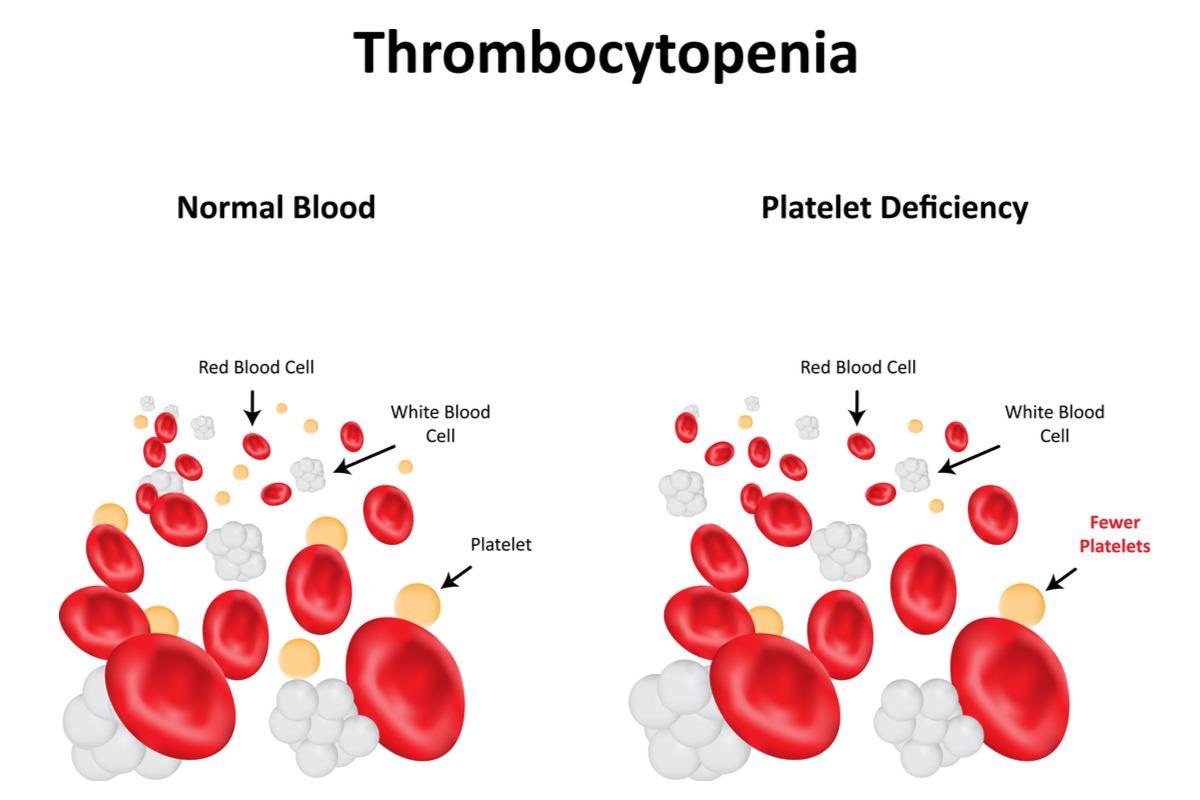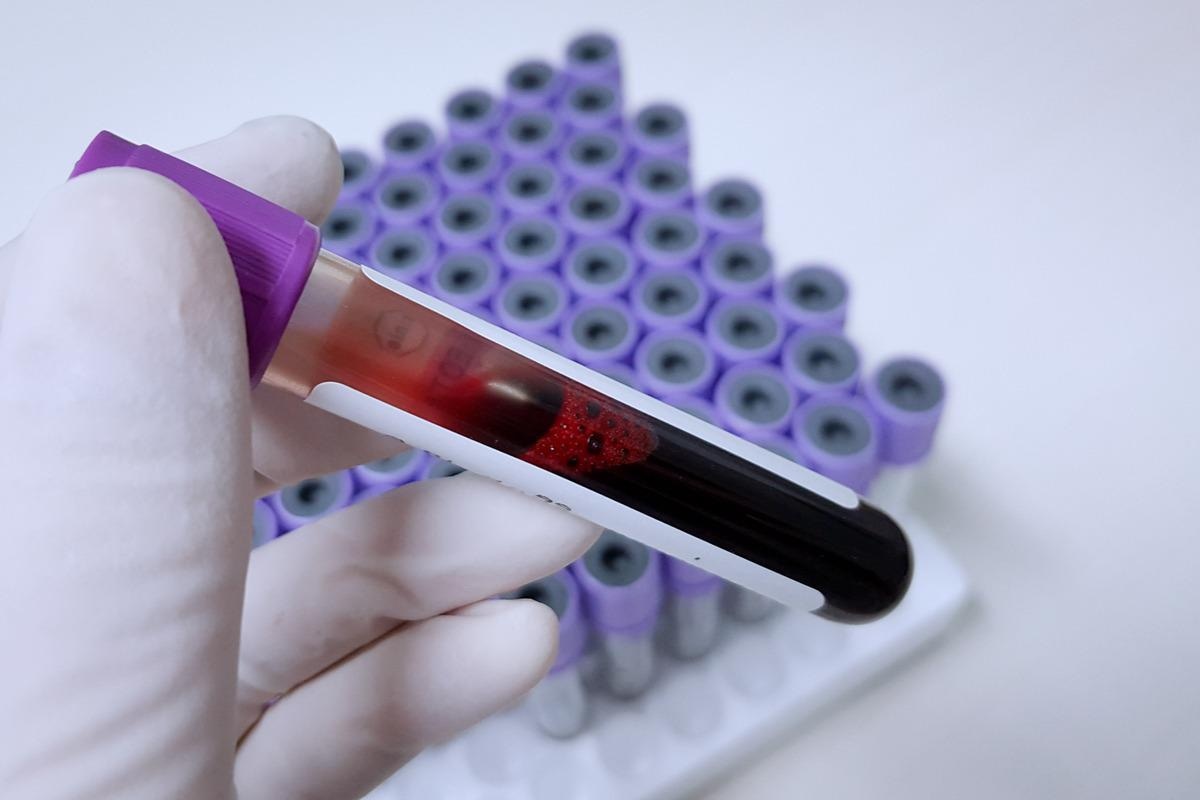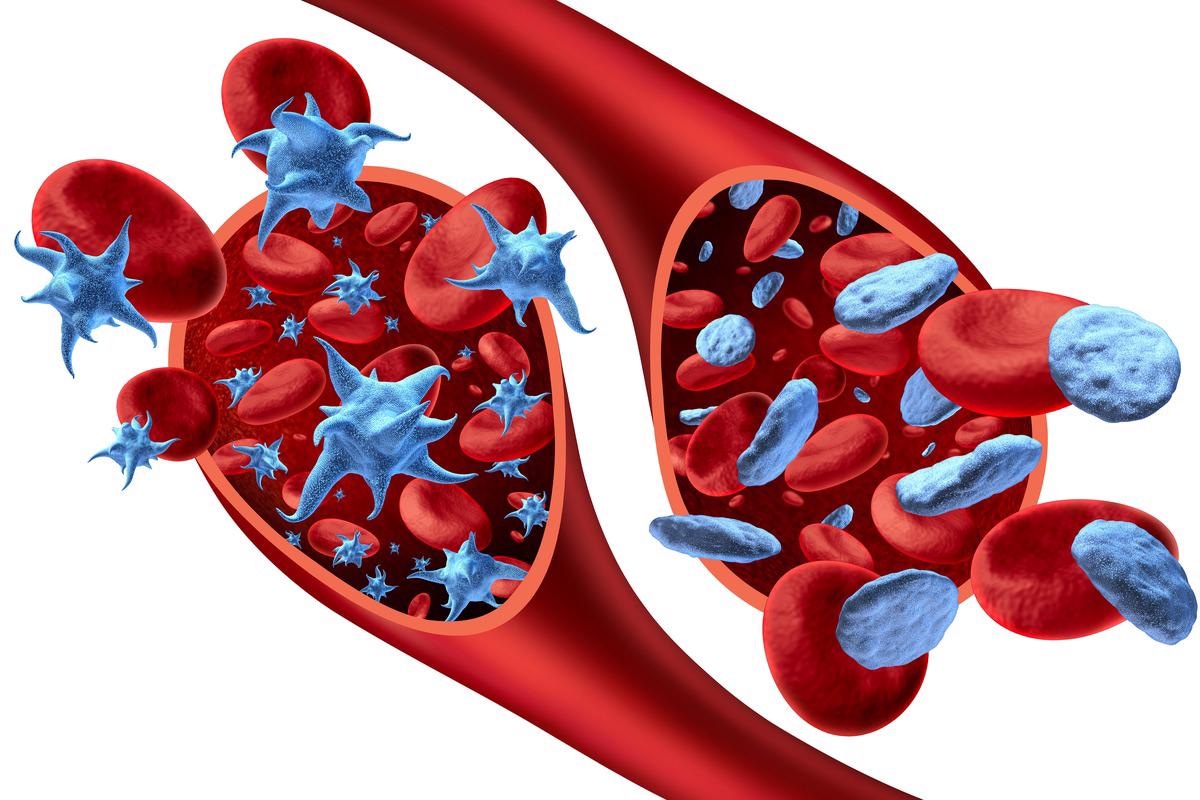Thrombocytopenia is a condition in which the blood has an unusually low number of platelets. Also known as thrombocytes, the platelets are blood components that aid in the process of blood clotting.
A variety of factors including different disorders can contribute to the development of thrombocytopenia. One such auto-immune condition known as ITP (immunological thrombocytopenia) is one of the most common causes of decreased platelets. When the bone marrow does not create enough platelets, for example with leukemia or with other bone marrow disorders, thrombocytopenia may develop.
Bruising and bleeding in the mouth and gums are a few common symptoms. Treatment is determined by the underlying source of the problem. A platelet transfusion may be required in some circumstances to stop or prevent bleeding.
 Image Credit: joshya/Shutterstock
Image Credit: joshya/Shutterstock
Causes
There are three major causes of insufficient platelets in thrombocytopenia. These include low platelet production in the bone marrow, increased platelet breakdown in the circulation, and increased platelet breakdown in the spleen or liver. Low production of platelets in the bone marrow can be caused due to a variety of factors like aplastic anemia, cancer (leukemia), folate deficiency, cirrhosis, and myelodysplastic syndrome.
Other factors that can contribute to this are bone marrow infections, vitamin B12 deficiency, and chemotherapy. Low platelet count can also be attributed to a high dosage of radiation therapy or receiving both radiation therapy and chemotherapy simultaneously.
Conditions that lead to an increase in the breakdown of platelets are an enlarged spleen, drug-induced conditions, and serious illnesses during which the proteins involved in blood clotting become hyperactive.
Thrombocytopenia can be caused by hepatitis C virus, HIV, Epstein-Barr virus, and a variety of other viruses. Thrombocytopenia can also be triggered by alcoholism and exposure to harmful chemicals such as arsenic, benzene, and pesticides.
Symptoms and prevalence
Patients with a mild form of thrombocytopenia do not experience symptoms. Depending on the origin and severity of thrombocytopenia, the rate at which symptoms appear can vary. A cut or nosebleed that won't stop bleeding is often one of the first indicators. Bleeding in the mouth and gums, bruises, severe menstrual bleeding, rectal bleeding, and blood in the stool, urine, or vomit are all common symptoms.
The exact prevalence of thrombocytopenia is unknown. Although, people of various ages, races, and genders can develop thrombocytopenia. Approximately 5% of pregnant women develop moderate thrombocytopenia shortly before giving birth for unknown causes.
 Image Credit: Anyanee anun/Shutterstock
Image Credit: Anyanee anun/Shutterstock
Diagnosis and treatment
Thrombocytopenia can be diagnosed through a complete blood count examination, identifying the number of platelets. A blood clot test can also be helpful, as it can measure the duration of blood clotting.
Treatment is determined by identifying the underlying cause. A platelet transfusion may be required in some circumstances to stop or prevent bleeding. The most common way to treat thrombocytopenia induced by medicine is to stop the intake. Prednisone to reduce platelet destruction, medicines to promote platelet synthesis in the bone marrow, and sometimes spleen excision are used to treat thrombocytopenia caused by autoimmune destruction of platelets (as in IPT). Drugs like aspirin that decrease platelet function should not be taken by people who have a low platelet count or irregular bleeding.
Immune thrombocytopenia (ITP)
ITP is an autoimmune bleeding condition characterized by excessive reticuloendothelial platelet breakdown and insufficient compensatory platelet synthesis. Platelet autoantibodies opsonize platelets and promote megakaryocyte apoptosis, as well as direct T cell-mediated megakaryocyte and platelet destruction, resulting in ITP. In a patient with no other underlying causes for thrombocytopenia, a platelet count of 100 109/L is required for the diagnosis of ITP.
For decades, the first treatment for ITP has remained fairly unchanged, with corticosteroids and intravenous immunoglobulin (IVIG) being used to handle newly diagnosed patients and chronic patients in need of immediate rescue therapy. However, during the last decade, therapy choices have significantly improved. While most previous treatments worked by reducing platelet destruction through a general immune system effect, newer medicines target the pathophysiology of ITP more precisely by increasing platelet production or decreasing platelet destruction.
 Image Credit: Lightspring/Shutterstock
Image Credit: Lightspring/Shutterstock
Thrombocytopenia and COVID-19
Although there are few publications on the mechanisms of thrombocytopenia in COVID-19 patients, thrombocytopenia is extremely prevalent. Reduced lymphocyte and platelet counts are common hematological abnormalities observed in COVID-19 patients. Thrombocytopenia was found in two of seven patients at the University of Hong Kong-Shenzhen Hospital (China). In a study of 1,099 patients from 31 provinces/direct-controlled municipalities in China, thrombocytopenia was found in 36.2% of all patients. On admission, 5% of the 41 patients in a designated hospital in Wuhan experienced thrombocytopenia.
More research into the processes of thrombocytopenia could provide a useful theoretical foundation for timely clinical treatment and give us a better knowledge of the condition.
References
- Xu, P., Zhou, Q., & Xu, J. (2020). Mechanism of thrombocytopenia in COVID-19 patients. Annals of hematology, 99(6), 1205–1208. https://doi.org/10.1007/s00277-020-04019-0
- Al-Samkari, H., & Kuter, D. J. (2020). Immune Thrombocytopenia in Adults: Modern Approaches to Diagnosis and Treatment. Seminars in thrombosis and hemostasis, 46(3), 275–288. https://doi.org/10.1055/s-0039-1700512
- Thrombocytopenia. [Online] MedlinePlus. Available at: https://medlineplus.gov/ency/article/000586.htm
- Overview of Thrombocytopenia. [Online] MSD Manual. Available at: https://www.msdmanuals.com/home/blood-disorders/platelet-disorders/overview-of-thrombocytopenia
- Low Platelet Count or Thrombocytopenia. [Online] Cancer.Net. Available at: https://www.cancer.net/coping-with-cancer/physical-emotional-and-social-effects-cancer/managing-physical-side-effects/low-platelet-count-or-thrombocytopenia
- Thrombocytopenia. [Online] Cleveland Clinic. Available at: https://my.clevelandclinic.org/health/diseases/14430-thrombocytopenia
Further Reading
Last Updated: May 19, 2022